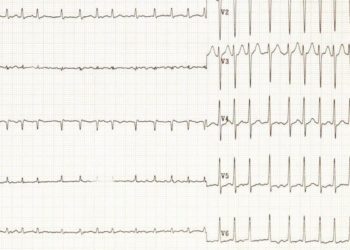New approaches effective in screening embryos for diseases
[tabs tab1=”2MM Rundown” tab2= “2MM Full Report”]
[tab]
Image: PD
1. Blastocyst biopsy and vitirification are effective in pre-implantation genetic diagnosis (PGD) of monogenic diseases.
2. In this study, blastocyst biopsy followed by cryopreservation and thawed embryo transfer resulted in higher implantation and live birth rates than those achieved after conventional blastomere biopsy with fresh embryo transfer.
Trophoectoderm, or blastocyst, biopsy followed by cryopreservation and thawed embryo transfer provides logistical advantages and may also result in better clinical outcomes over conventional blastomere biopsy. In this study, PGD using blastocyst biopsy demonstrated a 90% successful genotyping rate with 100% accuracy, 50% implantation rate (compared to 16% in controls) and a 60% live birth rate (33% in controls). Cryopreservation allows sufficient time for transportation, genetic diagnosis and preparation of the endometrial environment. Given its high success rates, this new approach may merit more widespread use in patients undergoing PGD for screening of monogenic diseases.
Strengths of this study include prospective design, a diverse range of monogenic diseases and use of a control group. Limitations include a small sample size (n=33) and unmatched controls, which increases susceptibility to confounding. Subsequent studies might include larger sample sizes, controls matched on demographic variables, and carriers of other genetic disorders.
Click to read the study in Human Reproduction
[/tab]
[tab]
Image: PD
1. Blastocyst biopsy and vitirification are effective in pre-implantation genetic diagnosis (PGD) of monogenic diseases.
2. In this study, blastocyst biopsy followed by cryopreservation and thawed embryo transfer resulted in higher implantation and live birth rates than those achieved after conventional blastomere biopsy with fresh embryo transfer.
This [prospective cohort] study included couples who were undergoing in vitro fertilization with PGD for screening of monogenic diseases between 2008 and 2012 in Taiwan and included 33 couples receiving blastocyst biopsy followed by cryopreservation and subsequent thawed embryo transfer as well as a control group of 9 couples receiving blastomere biopsy (1 cell removed at the 6-8 cell stage) followed by fresh embryo transfer. Following trophoectoderm biopsy, blastocysts were cryopreserved while PGD was performed. Biopsies were assessed for monogenic mutations using whole genome amplification, detection of STR markers, mini sequencing analysis and PCR. 1 to 2 unaffected blastocysts were thawed and transferred to each prepared uterus. Confirmatory prenatal diagnosis was performed at 12 weeks of gestation using chorionic villi sampling or at 17 weeks using amniocentesis.
Genotyping was successful in 90% (244/272) of cases and was 100% consistent with prenatal diagnosis. Blastocyst survival post-thawing was 94% (64/68), and the implantation rate was 50% (32/64). The live birth rate was 60% (24/40), resulting in 29 normal babies. In comparison to couples undergoing conventional blastomere biopsy and fresh embryo transfer at the same site, participants demonstrated superior implantation rates (50% vs. 16%) and live birth rates (60% vs. 33%).
In sum: Trophoectoderm, or blastocyst, biopsy followed by cryopreservation and thawed embryo transfer provides logistical advantages and may also result in better clinical outcomes over conventional blastomere biopsy. In this study, PGD using blastocyst biopsy demonstrated a 90% successful genotyping rate with 100% accuracy, 50% implantation rate (compared to 16% in controls) and a 60% live birth rate (33% in controls). Cryopreservation allows sufficient time for transportation, genetic diagnosis and preparation of the endometrial environment. Given its high success rates, this new approach may merit more widespread use in patients undergoing PGD for screening of monogenic diseases.
Strengths of this study include prospective design, a diverse range of monogenic diseases and use of a control group. Limitations include a small sample size (n=33) and unmatched controls, which increases susceptibility to confounding. Subsequent studies might include larger sample sizes, controls matched on demographic variables, and carriers of other genetic disorders.
Click to read the study in Human Reproduction
By Denise Pong and Leah Hawkins
More from this author: Updated Pap smear screening guidelines may delay diagnosis of cervical adenocarcinoma in situ, Maternal asthma associated with increased odds of spontaneous abortion, Short course of progesterone therapy treats abnormal uterine bleeding
© 2013 2minutemedicine.com. All rights reserved. No works may be reproduced without written consent from 2minutemedicine.com. Disclaimer: We present factual information directly from peer reviewed medical journals. No post should be construed as medical advice and is not intended as such by the authors or by 2minutemedicine.com. PLEASE SEE A HEALTHCARE PROVIDER IN YOUR AREA IF YOU SEEK MEDICAL ADVICE OF ANY SORT. Content is produced in accordance with fair use copyrights solely and strictly for the purpose of teaching, news and criticism. No benefit, monetary or otherwise, is realized by any participants or the owner of this domain.
[/tab]
[/tabs]





![Childhood ADHD associated with increased risk of suicide [Physician Comment]](https://www.2minutemedicine.com/wp-content/uploads/2013/03/PET-image1-e1377449984183-75x75.jpg)

